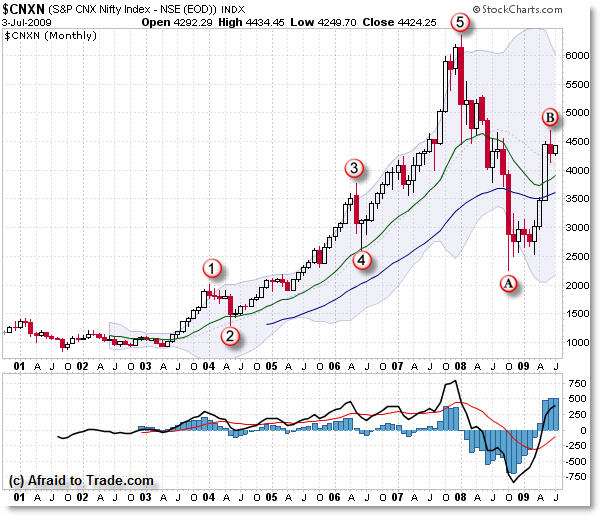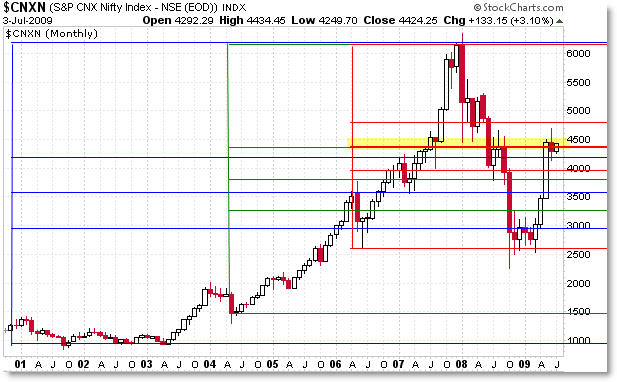This is a day of reckoning for California and, ultimately, for all of America.
Will our nation’s largest debtors meet their massive financial obligations? Or will many ultimately default?
In California, the answer given by the state Treasurer’s office was a commitment never to default, seeking to directly refute my forecast issued here 13 days ago under the headline “California Collapsing.”
According to the BusinessJournal:
“The California’s state Treasurer’s office on Monday refuted an analyst’s recommendation last week that investors dump California municipal bonds and that the state is likely to default.
“Analyst Martin Weiss of Weiss Research said in a June 22 report that California’s financial woes create ‘a very high probability’ that California will eventually miss debt service payments.
“Mr. Weiss’ analysis and recommendation, to put it kindly, is misinformed,” responded Tom Dresslar, a spokesman for state Treasurer Bill Lockyer. “Even the credit rating agencies said, in announcing possible downgrades, that the likelihood of default is low.”
Ironically, just two days later …
California Defaulted on Its Short-Term Debt Obligations
In lieu of cash, California issued i.o.u.’s to meet obligations to vendors and citizens, postponing payments on its current liabilities.
But current liabilities are short-term debts. Ergo, based on this standard definition, California is already defaulting.
It’s not the same as defaulting on its bonds. But for reasons I’ll explain in a moment, I’m now more convinced than ever that a bond default is also coming.
Consider the importance of this week’s events …
If California’s creditors had a say in the issuance of i.o.u.’s, Sacramento officials might be able to deny they’re in default by implying mutual consent. But that’s far from the facts. The creditors had nothing to do with this decision. It was unilateral, a telltale aspect of debt defaults.
If the i.o.u.’s were as good as cash, Sacramento might also deny the D-word. But the sad reality is that, if you’re among those stuck with California i.o.u.’s, you have only two choices: You have to either hold them while you sweat and cross your fingers or you have to sell them at a steep discount - exactly the same choices facing bond investors after a default.
If all major financial institutions accepted California i.o.u.’s, that might also help Sacramento justify a continued denial of default. But the reality is that most banks are not accepting the i.o.u.’s, and no one could argue their reasoning is financially unsound.
Why accept a piece of paper at face value when it’s worth significantly less than face value on the open market? The nation’s largest banks already have enough troubles with toxic mortgages, toxic credit cards and toxic loans on commercial real estate. They’re not exactly anxious to pile on toxic California paper.
If, as in past episodes, California’s budget mess were mostly due to a political snafu, it could be argued that the i.o.u.’s are merely a temporary stop-gap. But that’s clearly not the case either.
To the contrary, California’s budget crisis is rooted in an unprecedented economic depression with 11.5 percent unemployment and the greatest concentration of mortgage delinquencies in the nation. Even if the i.o.u.’s are ultimately paid in full, California’s debt troubles are not going away.
Why I Expect a Default on California’s Bonds
Short of an 11th-hour rescue from Washington - where political resistance to bailouts has grown dramatically in the wake of recent federal rescues - it will be extremely difficult for California to avoid a default on its bonds.
The fundamental reason: A vicious cycle of budget tightening and falling state revenues.
The state cannot balance its books without inadvertently making the California economy - and its deficit - even worse.
When it cuts spending, it merely creates more unemployment and forces consumers to slash their own spending or default on their own obligations, driving the economy into a still deeper depression. And when it raises taxes, it has a similar impact.
Either way, the end result is lower revenues flowing into the state’s coffers.
But now California has over $28 billion in bonds coming due between now and October. How will it come up with the cash is a great mystery to me. Bond holders are certainly not going to be among those accepting i.o.u.’s.
Wall Street Rating Agencies Also in Denial
The business model of Moody’s, S&P and Fitch is to sell their ratings to bond issuers; the ratings are bought and paid for by the very institutions being rated, including the state of California.
After multiple investigations of the Wall Street ratings agencies, Congress and the Obama Administration are proposing radical changes. But right now, it’s business as usual, and the egregiously conflicted business model of the Wall Street rating agencies still stands.
I believe that’s a key reason the rating agencies have not yet fully recognized the obviously dire state of California’s finances. And that’s why California’s state Treasurer can still claim Wall Street “doesn’t agree” with more realistic analysis like ours.
In effect, the state virtually pays them to hold their punches.
But despite these blatant conflicts of interest, the truth cannot be bottled up forever. Here’s what I see coming next:
1. Downgrade massacre: A series of multi-notch downgrades by Fitch, Moody’s and S&P, making it extremely difficult - if not impossible - for California to roll over maturing debts at any cost.
2. Worsening deficit: Surging interest costs and greater than expected declines in cash inflows, bloating California’s deficit even further.
3. Washington snub: A last-ditch effort to persuade Treasury Secretary Geithner and President Obama to reverse their earlier decision not to bail out California.
But Washington’s arguments against a California bailout are relatively firm: They’re already giving California billions through the stimulus package. If they bail out California, what will they say to the dozens of other states that line up on the White House lawn asking for theirs?
In contrast, arguments supporting a federal bailout of California sound like a hollow rerun of last year’s “bailout-or-meltdown” ultimatum by former Treasury Secretary Paulson to Congress. It’s a long-ago discredited approach to financial emergencies.
4. Default on California bonds: Despite Sacramento’s official mantra that a default is impossible and unthinkable, it happens.
5. Cascade of defaults: If giant California can default, the new assumption is bound to be that almost any issuer of tax-exempt securities can do the same. A cascade of downgrades and defaults by other states and municipalities ensues.
What to Do …
If you’re a U.S. citizen or resident - whether in California or not - don’t count on borrowing money. Prepare yourself for a return of last fall’s environment in which consumer credit was either too expensive or unavailable.
Pinch pennies. Sell off unneeded assets and possessions. And raise as much cash as you can - for emergencies and for your family’s future.
If you’re a bond investor, better to be safe than sorry. Unload your tax-exempt bonds and tax-exempt mutual funds. With few exceptions, the benefits do not justify the rapidly growing risk.
And if you’re a more aggressive investor, seriously consider transforming the inevitable market volatility of this crisis into a series of substantial profit opportunities.
The key: Timing the market!









